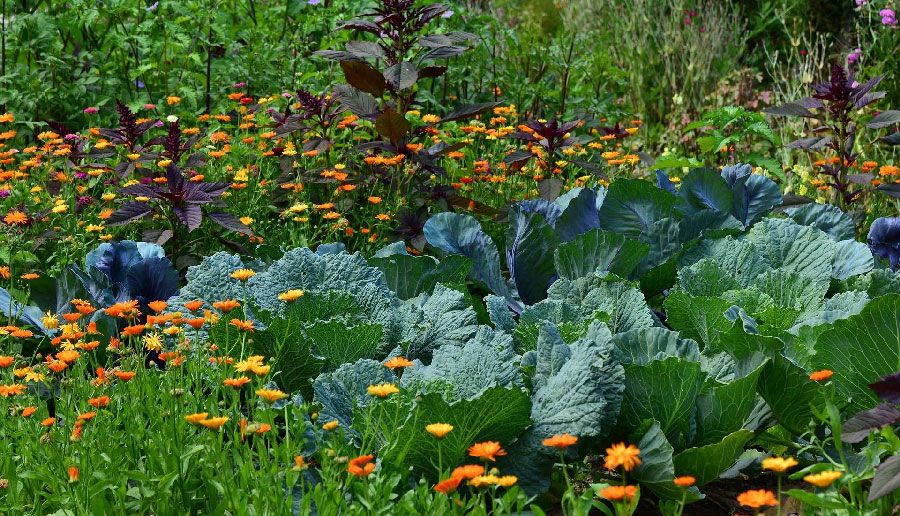If you’ve ever dreamed of a garden that practically takes care of itself—lush, vibrant, abundant, and in harmony with nature—then it’s time to Learn the secret to Forest garden! This gardening approach, inspired by natural woodland ecosystems, turns your outdoor space into a productive, low-maintenance food and plant haven.Whether you have a backyard, homestead, or even a large urban garden, creating your own forest garden offers benefits that go far beyond traditional gardening. From improved soil health to year-round harvests and long-term sustainability, the forest garden method is transforming how gardeners in the U.S., U.K., and Canada grow food.In this article, you’ll discover the principles, design tips, plant ideas, and practical steps that unveil the real secret to building a thriving forest garden of your own.What Is a Forest Garden?A Natural Ecosystem in Your BackyardA forest garden is a multi-layered, self-sustaining garden modelled after a natural forest, but filled with edible, medicinal, and beneficial plants. Unlike a standard vegetable patch, which requires constant replanting and maintenance, a forest garden relies on perennial plants and ecological design.The Seven Layers of a Classic Forest GardenTo Learn the secret to Forest garden, you need to understand how its structure mimics nature:Canopy Layer – Tall trees such as nut trees or larger fruit treesSub-Canopy Layer – Smaller fruit trees like apples, plums, or cherriesShrub Layer – Berries such as currants, raspberries, blueberriesHerbaceous Layer – Herbs, flowers, and leafy greensGround Cover Layer – Low-growing plants that protect soilRoot Layer – Edible roots and tubersVine Layer – Climbing plants that use vertical spaceThis multi-layer design maximizes your yield while minimizing competition—every plant has its role, and together they form a balanced ecosystem.Why Choose a Forest Garden?1. Low Maintenance Over TimeAfter initial setup, forest gardens require far less watering, weeding, and fertilizing than traditional gardens. Nature handles most of the work!2. Environmentally FriendlyForest gardens support pollinators, improve biodiversity, enrich soil naturally, and reduce the need for synthetic chemicals.3. Year-Round ProductionWith layers of perennials, you enjoy food, herbs, and blooms through multiple seasons.4. Perfect for All ClimatesWhether your climate is rainy like the Pacific Northwest, cold like Canadian provinces, or mild like the U.K., there’s a forest garden design that fits.How to Design Your Own Forest GardenStep 1: Observe Your SpaceBefore planting, take note of:Sunlight patternsWind exposureWater flowSoil typeWildlife presenceThese details help you Learn the secret to Forest garden success—work with nature, not against it.Step 2: Start with the CanopyChoose one or two anchor trees for your garden. Examples include:Walnut, pecan, hazelnutApple, pear, cherryMulberrySelect trees suited to your climate and soil.Step 3: Add Shrubs and Small TreesPlant berry bushes or dwarf fruit trees around your canopy layer:BlueberriesRaspberriesElderberriesGooseberriesAronia berriesThese shrubs attract pollinators and provide nutrient-dense fruit.Step 4: Build the Lower LayersNow fill in with herbs, perennial vegetables, and ground-cover plants:Mint, thyme, oreganoChives, garlic, onionsRhubarb, sorrel, asparagusStrawberriesCreeping thyme or clover for ground coverJust like a forest floor, this layer keeps moisture in and weeds out.Step 5: Incorporate VinesUse vertical space with vines such as:Kiwi (hardy varieties for colder regions)GrapesHopsPassionflower (in warmer climates)Vines increase yield without expanding your garden footprint.The Real Secret: Plant GuildsIf there’s one concept that will truly help you Learn the secret to Forest garden, it’s the idea of plant guilds. A guild is a group of plants that support each other in different ways—by fixing nitrogen, attracting pollinators, repelling pests, or providing shade.Example: Apple Tree GuildApple Tree – Main cropComfrey – Dynamic accumulator (feeds the soil)Chives & Garlic – Repel pestsClover – Nitrogen fixerYarrow – Attracts beneficial insectsDaffodils – Discourages rodentsGuilds create a garden that largely maintains its own health, reducing your workload dramatically.Best Plants for a Forest Garden (Climate-Friendly Picks)For the United StatesPawpawPersimmonBlackberriesPecansServiceberryFor the United KingdomApplePearHazelnutGooseberryElderflowerFor CanadaSaskatoon berryHardy kiwiSea buckthornCurrantsSugar mapleThese plants thrive in cooler climates and support long-term forest garden growth.Practical Tips for Forest Garden Success1. Start SmallA forest garden doesn’t need to be huge. Even a 10×10 ft space can be productive.2. Use Mulch GenerouslyMulch retains moisture, suppresses weeds, and enriches soil.3. Choose Perennials Over AnnualsPerennials return year after year, reducing planting work.4. Mix FunctionsInclude plants that:Attract pollinatorsFix nitrogenProvide foodProtect soil5. Embrace Nature’s PaceA forest garden grows slowly at first but becomes more productive each year. Patience pays off.Common Mistakes to AvoidPlanting too densely too soonIgnoring sunlight needs for fruit treesOverwatering early onForgetting to plan for mature plant sizeUsing invasive species without controlAvoiding these pitfalls ensures your forest garden stays manageable and healthy.Benefits Beyond GardeningCreating a forest garden doesn’t just give you food—it enriches your life.Health BenefitsFresh, organic fruits and herbsMental relaxation from being in natureReduced exposure to chemicalsEnvironmental ImpactHabitat for wildlifeImproved soil structureReduced carbon footprintLifestyle EnhancementA peaceful retreat in your own backyardA beautiful, resilient landscapeLong-term food securityConclusionIf you’re ready to transform your garden into a thriving, abundant ecosystem, it’s time to Learn the secret to Forest garden! By embracing natural systems, selecting the right plants, building layered structures, and understanding plant guilds, you can create a self-sustaining garden that grows healthier year after year.Whether you’re in the U.S., U.K., or Canada, a forest garden offers beauty, sustainability, and food production all in one. With the tips and guidance in this article, you’re well on your way to designing a green sanctuary that feels both magical and practical.

